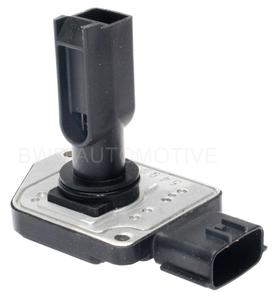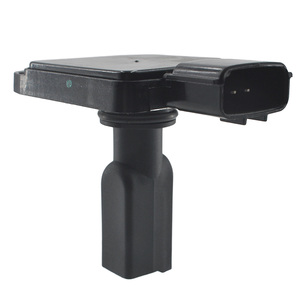
All categories
Featured selections
Trade Assurance
Buyer Central
Help Center
Get the app
Become a supplier

(2110 products available)

















































Oxygen sensor for Fiat are electronic devices used in internal combustion engines to measure the concentration of oxygen in the exhaust gases. There are different types of Fiat oxygen sensors, including:
Following the recommendations in the service manual is the best way to maintain the proper functioning of the Fiat oxygen sensor. The vehicle's handbook will provide the needed information about the specific sensor used in the car and the recommended maintenance practices.
Oxygen sensors are generally low-maintenance devices. However, some basic requirements must be fulfilled to ensure their long life and accuracy. Here are a few tips:
Regular Engine Maintenance
Fiat vehicle owners should stick to the recommended engine maintenance schedules. This includes using high-quality engine oil, regular oil changes, and timely servicing. A well-maintained engine reduces the likelihood of sensor contamination and extends its lifespan.
Avoid Short Trips
Frequent short trips with a cold engine can lead to increased wear and tear on the oxygen sensor. The sensor requires time to reach its optimal operating temperature, which is about 600°F (316°C). Prolonged short journeys can cause the sensor to work harder and potentially shorten its lifespan.
Use High-Quality Fuel
Using low-quality fuel with high levels of impurities can lead to sensor fouling over time. Contaminants in inferior fuel may deposit on the sensor's surface, affecting its ability to accurately measure oxygen levels. Therefore, it is better to use fuel with good quality to keep the sensor clean and functioning properly.
Avoid Engine Modifications
Making modifications to the engine, especially concerning the exhaust system, can impact the performance of the oxygen sensor. If considering any engine modifications, consult with a professional mechanic to ensure compatibility with the existing sensor setup.
Avoid Engine Control Unit (ECU) Modifications
Modifying the Engine Control Unit (ECU) parameters can affect the oxygen sensor's operation. If planning to modify the ECU, seek expert advice to ensure the changes align with the sensor's requirements.
Avoid Oil or Fuel Additives
Be cautious when using oil or fuel additives claiming to improve engine performance or cleanliness. Some additives may contain substances that can harm the oxygen sensor or interfere with its function. Stick to products approved by the vehicle manufacturer for optimal results.
By following these simple maintenance tips, Fiat vehicle owners can ensure their oxygen sensors remain in good condition for optimal engine performance, fuel efficiency, and reduced emissions.
Choosing the right Fiat oxygen sensor for a car can be a daunting task, but it doesn't have to be. Here are a few tips and steps to guide the decision-making process:
The first step in choosing the right oxygen sensor for a Fiat vehicle is to understand the car's make and model. Different makes and models of cars have different requirements for oxygen sensors. For instance, a newer model of a Fiat car may require a more advanced oxygen sensor than an older model. Understanding the car's specifications will help in choosing the correct oxygen sensor that will work efficiently with the vehicle.
Another important factor to consider when choosing a Fiat O2 sensor is the car's exhaust system design. The oxygen sensor's location in the exhaust system can affect its performance. Therefore, choosing an oxygen sensor that is designed to work optimally in the particular configuration of the car's exhaust system is important. This information can be obtained from the car's user manual or by consulting a mechanic.
Additionally, when choosing an oxygen sensor for a Fiat vehicle, it is important to consider the driving habits. If the car is mostly driven in city traffic with frequent stops and accelerations, a high-quality oxygen sensor that can quickly adapt to changing air-fuel ratios is recommended. However, if the car is mostly driven on highways with steady speeds, a more cost-effective oxygen sensor that is sufficient for optimal performance and fuel efficiency is acceptable.
Lastly, it is important to choose a reputable brand when purchasing an oxygen sensor. There are many brands available in the market, but choosing a well-known brand guarantees quality and reliability. It is also recommended to purchase the oxygen sensor from authorized dealers or trusted retailers to ensure authenticity.
Many simple checks and repairs can be done by a knowledgeable car owner. Replacing an oxygen sensor is one of those tasks that can often be handled without professional assistance. If the car owner decides to replace the sensor themselves, they will need to gather a few tools. A socket wrench set, possibly including an oxygen sensor socket, and a torque wrench will be required. Working with electrical components requires a pair of wire snips and strippers. Adhesive heat-shrink tubing will be needed for electrical connections. To ensure a clear view of the sensor and surrounding components, a flashlight or work light will be necessary. To assist in the sensor replacement process, a repair manual specific to the vehicle will be useful.
After gathering the necessary tools, the car owner can proceed with the replacement. First, they must locate the existing oxygen sensor. The vehicle's repair manual will indicate its location, typically found in the exhaust system before or after the catalytic converter. Once the sensor is located, they should use a socket wrench to remove the old sensor carefully. It's important to be cautious not to damage the surrounding components while doing this.
After removing the old sensor, the car owner can install the new one. They should apply anti-seize compound to the sensor's threads, following the manufacturer's instructions. Then, they will carefully screw the new sensor into place, taking care not to cross-thread it. A torque wrench will be used to tighten the sensor to the manufacturer's specified torque.
Once the new sensor is installed, they will reconnect the electrical plug, ensuring a secure and clean connection. To protect the wires and maintain proper function, they will use adhesive heat-shrink tubing.
Finally, the car owner will start the engine and allow it to run for a few minutes. They will ensure that the check engine light is no longer illuminated and that the engine runs smoothly. With the new oxygen sensor successfully installed, they will close the hood and enjoy the peace of mind that comes with a properly functioning vehicle.
Q1: What are the common signs of a faulty oxygen sensor?
A1: A faulty oxygen sensor can cause several issues. The most common signs include a check engine light, poor fuel economy, high emissions, rough engine running, and poor engine performance. Any of these signs can indicate a problem with the oxygen sensor.
Q2: Can one drive with a faulty oxygen sensor?
A2: While it's technically possible to drive with a faulty oxygen sensor, it's not recommended. A faulty sensor can lead to increased emissions, potentially harming the environment. It can also cause damage to other engine components, like the catalytic converter, which could result in more costly repairs. Furthermore, it can affect the vehicle's performance, leading to issues like poor fuel efficiency or engine roughness.
Q3: How long does it take to replace an oxygen sensor?
A3: The time taken to replace an oxygen sensor can vary depending on the sensor's location and the vehicle's make and model. Generally, it can take anywhere from 30 minutes to a couple of hours. The downstream sensor is often more accessible and quicker to replace than the others.
Q4: Is it necessary to replace all oxygen sensors at the same time?
A4: It's not usually necessary to replace all oxygen sensors simultaneously unless they're all faulty. However, if one of the sensors is failing and the vehicle has multiple sensors, replacing them simultaneously can save time and money in the long run. It's always best to inspect and test each sensor individually.
Q5: Do new oxygen sensors require calibration?
A5: Most new oxygen sensors do not require calibration. They are designed to be a plug-and-play solution. However, following the manufacturer's instructions is always best. Some vehicles may require an ECU reset or adaptation procedure after an oxygen sensor replacement.